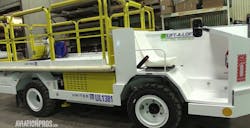SAO JOSE DOS CAMPOS, Brazil , Nov. 10 /PRNewswire-FirstCall/ -- Embraer (NYSE: ERJ; BOVESPA: EMBR3) presented its 20-year forecast, today, of the world demand for 30- to 120-seat commercial jets, and its ten-year forecast for the business aviation market. The announcement was made at the close of the ninth edition of the annual Embraer Day encounter with analysts and investors, organized by the Company and held, this year, on November 6 and 7, in Sao Jose dos Campos, Brazil .
Long-Term Market Outlook
Commercial Aviation Market
World air travel demand should grow on an average of 5% per year, from 2009 to 2028. Embraer estimates that the air transportation industry will react positively, after the end of the current economic crisis, and that the long-term growth trend will be maintained. China will lead the growth in the next 20 years, with an average annual rate of more than 7.5%, followed by the emerging regions of Latin America and Russia & Commonwealth of Independent States (CIS), both at 6% per year. Asia Pacific and Africa will grow about 5%, and the European and North American markets, 4%.
Embraer foresees a global demand of 6,750 jets with a 30- to 120-seat
capacity over the next 20 years, which will generate sales of new aircraft
totaling
The forecast indicates that the 30- to 60-seat capacity segment will be under pressure, over the next five years, due to the economic crisis and fuel prices, forcing airlines to review their strategies, mainly in the North American environment. The 50-seat regional jet market has achieved maturity, but tends to continue supporting the U.S. and European systems and to contribute to the development of regional aviation in Russia & CIS, Mexico , Africa and South America .
The jets with 61 to 120 seats should continue to help airlines match aircraft capacity to market demand, by right-sizing low load factor narrow-body airplanes that have too many seats. Furthermore, the jets in this segment also tend to be used to substitute older fleets, to expand into new markets, and to aid the natural growth of regional airlines on high demand routes operated by smaller jets, for the purpose of increasing revenues and market share.
Embraer believes that emissions will be one of the main influences on the development of future aircraft. Today, more than 700 units of the 30- to 120-seat fleet are over 20 years old and should soon be replaced, which will result in significant environmental benefits. In this scenario, Embraer's family of E-Jets provides a reduction of as much as 50% in carbon dioxide emissions.
Embraer forecasts a global demand of 11,880 business jets for 2009-2018,
which could generate approximately
Since 2006, the industry has posted consecutive delivery records, largely supported by the growing demand from non-U.S. markets, but deliveries are expected to slow down, in 2009, with a market adjustment in the 2009-2012 period. Despite the reduction in short-term deliveries, long-term sustainable growth is foreseen for the business jet market, due to the return of economic growth, albeit at more conservative levels.
Launched in 2005, the Phenom 100 and Phenom 300 jets are positioned in the entry level and light segments, respectively. The Phenom 100's maiden flight occurred on July 26, 2007 , and the model has already accumulated over 1,300 hours of test flights for certification, which is expected by the end of the 2008. Ten Phenom 100s are expected to be delivered to North American customers this year. The first flight of the Phenom 300 occurred on April 29, 2008 . The flight test campaign for certification moves steadily ahead, and is expected to be concluded in the second half of 2009.
In May 2006 , the Company launched the Lineage 1000, an ultra-large executive jet based on the platform of the EMBRAER 190 commercial jet. The first airplane took its maiden flight on October 26, 2007 . Today, four jets are in the final interior assembly stage. Certification and the first delivery of this model will occur by the end of 2008.
The Legacy 500 midsize and Legacy 450 midlight business jets were launched in May of this year, and should enter service in the second half of 2012 and 2013, respectively. The Legacy 600 continues to increase it market share, currently 15% in the super midsize category, and now has over 150 aircraft operating in 23 countries.
Embraer is investing over
The excellent acceptance of the Phenom, Legacy and Lineage executive jets,
and the continuous progress of their respective development programs has
resulted in a current firm order backlog of
Delivery and Investments Forecast for 2009
Embraer has revised its estimated aircraft deliveries for 2009, and
expects to deliver 270 jets for the commercial aviation, executive aviation
and defense and government (state-owned airlines and transportation of
government officials) segments. The Company has also released its investments
forecast for 2009, totaling
Embraer (Empresa Brasileira de Aeronautica S.A. -- NYSE: ERJ;
Bovespa: EMBR3) is the world's largest manufacturer of commercial jets up to
120 seats, and one of Brazil's leading exporters. Embraer's headquarters are
located in Sao Jose dos Campos, Sao Paulo , and it has offices, industrial
operations and customer service facilities in Brazil , the United States ,
France , Portugal , China and Singapore . Founded in 1969, the Company designs,
develops, manufactures and sells aircraft for the Commercial Aviation,
Executive Aviation, and Defense and Government segments. The Company also
provides after sales support and services to customers worldwide. On September
30, 2008 , Embraer had a workforce of 23,745 employees and a firm order backlog
of
This document may contain projections, statements and estimates regarding circumstances or events yet to take place. Those projections and estimates are based largely on current expectations, forecasts on future events and financial tendencies that affect Embraer's businesses. Those estimates are subject to risks, uncertainties and suppositions that include, among others: general economic, political and trade conditions in Brazil and in those markets where Embraer does business; expectations on industry trends; the Company's investment plans; its capacity to develop and deliver products on the dates previously agreed upon, and existing and future governmental regulations. The words "believe", "may", "is able", "will be able", "intend", "continue", "anticipate", "expect" and other similar terms are supposed to identify potentialities. Embraer does not feel compelled to publish updates nor to revise any estimates due to new information, future events or any other facts. In view of the inherent risks and uncertainties, such estimates, events and circumstances may not take place. The actual results can therefore differ substantially from those previously published as Embraer expectations.
SOURCE Embraer




